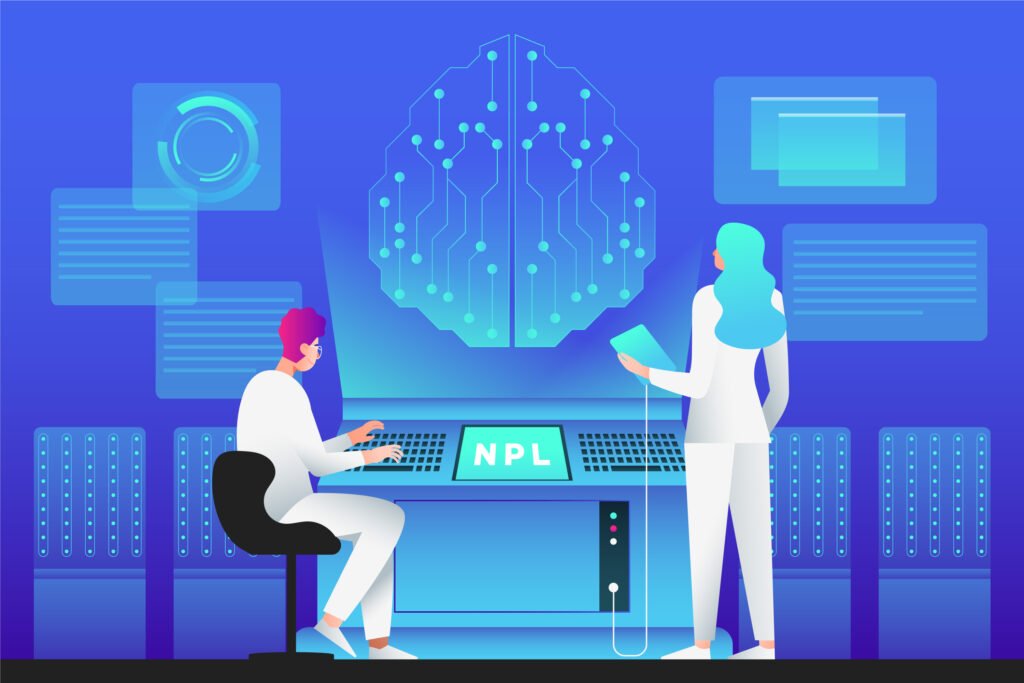Various sectors have been transformed by the merger of Field-Programmable Gate Arrays (FPGAs) with Artificial Intelligence (AI). Programmable integrated circuits, or FPGAs, are perfect for AI applications because they provide hardware flexibility and high-performance processing capabilities.
The potential for FPGA-based AI to progress in the area of artificial intelligence will be highlighted as we examine its current trends and potential applications in this blog article. We’ll talk about the advantages, difficulties, and burgeoning uses of FPGA-based AI solutions. Let’s explore the essential role that FPGA-based AI will play in determining the direction of intelligent systems in the future.
FPGA and AI: An Ideal Combination
FPGAs (Field-Programmable Gate Arrays) have emerged as a powerful tool in the field of artificial intelligence (AI). Their unique characteristics make them an ideal platform for accelerating AI computations and addressing the increasing demands of AI applications. In this section, we will delve into the reasons why FPGA and AI are such a perfect match.
A. Explanation of FPGA Technology and its Advantages:
Let’s first examine FPGA technology in order to get how AI and FPGA work together. After they are manufactured, integrated circuits called FPGAs can be reprogrammed. FPGAs offer a high degree of flexibility and configuration, in contrast to traditional processors like CPUs and GPUs, which have rigid designs.
One of the main benefits of FPGAs is the capacity to tailor the hardware to certain application requirements. Developers are able to create and use their own specialized circuits made just for AI algorithms. In comparison to general-purpose processors, this customization allows for effective parallel processing and can result in significant performance gains.
B. How FPGA Accelerates AI Computations:
AI computations can be accelerated with FPGAs by using hardware-level parallelism and pipelining. FPGAs have the ability to process several data streams concurrently, which is essential for AI applications like deep learning and neural networks that require vast volumes of data and intricate computations.
It is possible to achieve highly parallel task execution, cut down on overall processing time, and enable real-time inference by directly implementing AI algorithms on FPGA hardware. Because FPGAs provide fine-grained control, resource allocation can be optimized, leading to the effective use of computational resources.
C. Comparison of FPGA with Other Hardware Options:
While CPUs and GPUs have typically been the preferred choices for AI computations, FPGA has a number of benefits. Although CPUs are adaptable and programmable, they lack the parallel processing power needed for AI workloads. GPUs are excellent at parallel computing, but they have limited design flexibility for specialized circuits.
FPGAs successfully blend parallelism and flexibility. They offer high-performance parallel processing capabilities as well as the flexibility to construct specialized circuits specifically suited for AI algorithms. When it comes to power economy and low latency, FPGAs can perform better than CPUs and GPUs in some situations and significantly accelerate AI activities.
Current Trends in FPGA-Based AI
FPGA (Field-Programmable Gate Array) technology has gained significant traction in the field of artificial intelligence (AI) due to its unique capabilities and advantages. Let’s explore some of the current trends in FPGA-based AI and how they are shaping the landscape of AI development.
A. FPGA deployment in edge AI devices:
- The need for AI processing at the edge is increasing as AI applications penetrate more and more sectors and fields. Smart cameras, drones, and other edge AI devices that are part of the Internet of Things (IoT) frequently need low latency and real-time processing capabilities.
- Due to their capacity for parallel processing and reprogrammability, FPGAs present an appealing alternative for edge AI. They can be tailored to quickly carry out particular AI functions, minimizing the requirement for data transmission to the cloud and boosting privacy and security.
B. FPGA utilization in data centers and cloud infrastructure:
- FPGAs are being used in data centers and cloud infrastructure in addition to edge AI, which focuses on processing at the device level. To handle AI workloads effectively, data centers need to have a lot of computational power.
- FPGAs can offload some of the computationally heavy duties from conventional CPUs and GPUs due to their capacity to expedite AI computations and parallel processing.
- This tendency is especially pronounced in applications like real-time analytics and deep learning inference, where FPGAs can greatly enhance performance and energy efficiency.
C. FPGA-based AI in specialized domains:
- In specialized fields requiring high-performance computing, FPGA-based AI has made significant strides. FPGAs are being used by sectors like healthcare, banking, and autonomous cars to meet their specific needs.
- FPGAs are utilized in the healthcare industry for patient monitoring systems, tailored treatment, and real-time medical imaging processing. FPGAs are used in the financial industry for high-frequency trading, risk analysis, and fraud detection.
- FPGAs’ low-latency processing benefits autonomous cars by making it possible to complete tasks like object detection, path planning, and sensor fusion quickly.
Benefits of FPGA-Based AI
FPGAs (Field-Programmable Gate Arrays) offer several compelling benefits when it comes to implementing artificial intelligence (AI) algorithms and applications. These benefits make FPGA-based AI an attractive choice for various industries and use cases. Let’s explore some of the key advantages:
A. High Performance and Low Latency:
- High performance and low latency, which are essential needs for many AI applications, are delivered very well by FPGA-based AI systems. FPGAs can be tailored and tuned specifically for AI tasks, unlike general-purpose processors (CPUs) or even graphics processing units (GPUs).
- Faster inference and training times derive from the parallel processing, pipelining, and direct hardware acceleration made possible by this customization.
- FPGAs have the capacity to handle several data points at once, providing real-time AI capabilities that are very useful in robotics, industrial automation, and autonomous car applications.
B. Energy Efficiency and Power Optimization:
- FPGA-based AI also has considerable advantages in terms of energy efficiency and power optimization. FPGAs may be customized to precisely match the computational requirements of AI algorithms, cutting down on wasteful power use.
- When compared to conventional CPU or GPU architectures, FPGAs can give the same AI performance while consuming much less power by utilizing hardware acceleration and customized designs.
- The deployment of AI in resource-constrained contexts, on edge devices, and in mobile apps benefits significantly from this energy efficiency.
C. Flexibility and Reprogrammability:
- The flexibility and reprogrammability of FPGAs are well recognized, and this is a significant benefit in the rapidly changing AI world. FPGAs can adjust and meet new requirements as AI algorithms and models develop without the need for substantial hardware alterations or replacements.
- Faster innovation cycles are made possible by the programmable nature of FPGAs, which enables iterative development, quick prototyping, and optimization of AI algorithms.
- This decreases time-to-market. Performance and efficiency are further improved by this flexibility, which also makes it simple to integrate specialized AI algorithms or customized hardware accelerators.
Challenges and Limitations
While FPGA-based artificial intelligence (AI) offers several advantages, it also comes with its fair share of challenges and limitations that need to be considered. Understanding these challenges is crucial for developers and researchers to effectively leverage FPGA technology for AI applications. Here are some key challenges and limitations associated with FPGA-based AI:
- Complexity of FPGA Programming and Design:
- Programming and design for FPGAs can be challenging and demand particular knowledge and abilities. In contrast to conventional software development, FPGA programming entails specifying the hardware behavior using HDLs like Verilog or VHDL.
- For software developers who are not familiar with HDLs, this hardware-centric approach adds an additional level of complexity. Additionally, it might take time and requires knowledge of both the hardware and AI domains to optimize FPGA designs for AI algorithms.
- Cost Considerations and Resource Constraints:
- In comparison to alternative hardware options like central processing units (CPUs) or graphics processing units (GPUs), FPGA-based AI systems may be more expensive.
- FPGA devices often have greater initial costs, especially high-end FPGAs with more advanced capabilities and larger logic capacities. Additional resources, including development boards, simulation tools, and hardware accelerators, may be needed for building and deploying FPGA-based AI systems, which can raise the overall cost.
- Integration with Existing AI Frameworks and Toolchains:
- It can be difficult to integrate FPGA-based AI solutions with currently used AI frameworks and toolchains. The vast majority of AI frameworks, like TensorFlow or PyTorch, are primarily made to operate on CPUs or GPUs.
- In order for these frameworks to function effectively with FPGA architectures, they may need to be modified and optimized, which could take a lot of time and knowledge.
- For FPGA-based AI to be easily developed and widely used, it is essential to ensure smooth interaction between FPGA and software frameworks.
- Limited Availability of FPGA Experts:
- For businesses looking to apply FPGA-based AI solutions, the availability of FPGA specialists and skilled FPGA designers may be constrained. Specialized knowledge and experience are needed for FPGA design, which may not be widely available in the AI development community.
- The lack of qualified FPGA specialists may cause delays in planning and execution and raise the overall cost of FPGA-based AI initiatives.
- Trade-Offs Between Performance and Flexibility:
- Developers can adapt the hardware architecture for particular AI algorithms thanks to the flexibility and reprogrammability of FPGA devices.
- On FPGAs, however, getting great performance frequently necessitates the use of specialized optimization methods and trade-offs. It can be difficult to create AI systems using FPGAs that balance performance and adaptability.
- To get the best performance possible from FPGA systems, developers must carefully take into account elements like resource utilization, memory access patterns, and parallelization strategies.
- Scalability and Upgradability:
- Scalability and upgradeability issues may be problematic for FPGA-based AI systems. Although FPGAs have the benefit of being reprogrammable, it can be difficult to scale FPGA-based AI solutions to handle larger datasets or more complicated AI models.
- The entire system may need to be redesigned and reprogrammed in order to upgrade FPGA devices to newer versions or incorporate developments in FPGA technology.
- Planning for the long-term scalability and upgradeability of FPGA-based AI implementations must take these factors into account.
Conclusion
In conclusion, while FPGA-based AI offers intriguing potential, it’s important to recognize and deal with the difficulties and constraints brought on by this technology. Collaboration between software and hardware experts, financial investment in FPGA education and training, and ongoing innovation in FPGA development frameworks and tools are all necessary to meet these challenges. By doing this, FPGA-based AI will be able to realize its full potential and propel developments in a variety of industries, including autonomous vehicles, healthcare, and finance.


![What is FPGA Introduction to FPGA Basics [2023] computer-chip-dark-background-with-word-intel-it](https://fpgainsights.com/wp-content/uploads/2023/06/computer-chip-dark-background-with-word-intel-it-300x171.jpg)









